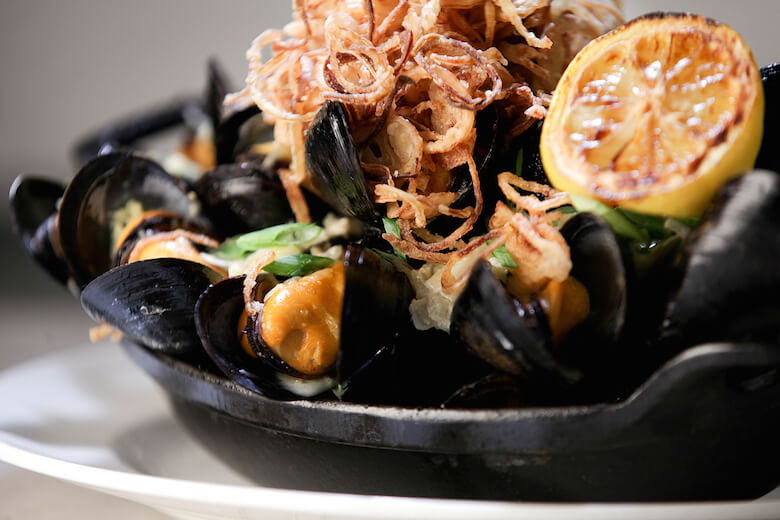
Alex Shapiro believes she can say she has the best mussels around. The Flex Mussels owner has spent years building relationships with a mussel farm in Prince Edward Island and other fish purveyors, and she serves the bivalves in a whopping 23 variations at her Flex Mussels restaurants. But what makes a good mussel, or a sustainable mussel for that matter? What’s a meat yield, and how can you tell the difference between a male or female mussel, or a rotten one? Here, we ask Shapiro those questions.
Just by eyeballing a mussel from the outside, how can you tell if it’s a winner or a no-go?
It’s hard to tell if a mussel is bad only from looking at the shell, but you can absolutely tell by the weight and sound. A light shell that sounds hollow when you knock it against another shell is a good indicator that the meat is dried up or the mussel is dead. Also, if a mussel shell is open, and does not close tightly when you knock it that means it is dead. Those should be discarded immediately.
What does it really mean for a mussel to be sustainable?
Mussels get their nourishment from the ocean waters they grow in, instead of requiring additional food that could pollute the water. In feeding this way, they also are simultaneously cleaning the ocean by filtering gallons of water per day. In addition, PEI Mussels are harvested sustainably from seed to being ready to serve.
How can people tell whether they’re being fed “good” or “bad” mussels at any given restaurant, and if they’re “bad,” should we send them back and cancel the order, assuming it’s a bad batch?
Quality of seafood can often be judged with your senses; if something doesn’t smell right, definitely don’t eat it. The other thing to remember is that the handling of seafood is really particular, and that up until the last moment, these guys are alive! No matter where you are, if one or two bad mussels are in a batch, that doesn’t indicate that the restaurant you’re at serves low quality food. But as a general rule, it’s always good to trust your senses before diving in.
With 23 varieties already being served at Flex Mussels, are you still thinking about what’s next?
I was just inspired by a Mexican dish “A La Veracruzana,” which cooks fish in a broth of tomato, green olives, capers and jalapeño. It’s something we are going to try out for the menu. For the holidays, nothing is more decadent than lobster and truffles. Try cooking the mussels in a Champagne cream broth and adding black truffle shavings (or use truffle butter with real truffle) and top with chunks of lobster. It’s so delicious and such a crowd-pleaser!
What’s the growing process like down on the mussel farm?
The plant is huge and there are a ton of steps that get you from pulling the mussels out of the water to being ready to ship. At the farm, the seeds are harvested from the wild during mussels spawning season and placed in the water on ropes for about 6 months until they grow to about the size of a thumb nail.
The seeds are then transferred to socks, where they grow in the ocean for 12 to 18 months.
One sock from each mussel bed is brought in, tested for shell shape, shell size, and meat yield before they are designated ready for distribution. After this, the mussels are brought into the plant in the same water they grow in, so they remain in their natural environment.
They are held in this water for a few days while they are cleaned, and purge their remaining sand. The mussels then get graded by size on a huge conveyor belt, and pressure washed to make sure they are pristine and ready to be packed and sent.



